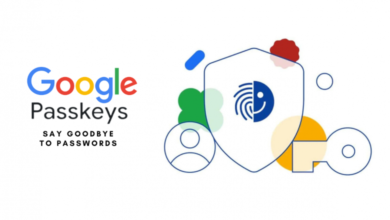
Understanding Ransomware and How to Protect Against It
In the digital age, cybersecurity threats have become a significant concern for individuals and organizations alike. One of the most prevalent and dangerous threats is ransomware. This blog will provide an in-depth understanding of ransomware, how it operates, and essential strategies to protect against it.
What is Ransomware?
Ransomware is a type of malicious software (malware) that encrypts the victim’s files. The attacker then demands a ransom from the victim to restore access to the data upon payment. The ransom demand usually comes with a deadline. If the victim does not pay in time, the data may be permanently lost or the ransom may increase.
Types of Ransomware
- Crypto Ransomware: This type encrypts valuable files on a computer so they cannot be accessed. Examples include CryptoLocker and WannaCry.
- Locker Ransomware: This type locks the victim out of their device entirely, rendering it unusable. An example is the Reveton ransomware.
- Scareware: It includes fake software or pop-ups claiming to have found issues on your computer and demanding payment to fix them. While it does not lock or encrypt files, it can be quite alarming and intimidating.
- Doxware (or Leakware): This type threatens to publish the victim’s personal data unless a ransom is paid. Examples include Ransom32 and Jigsaw.
How Does Ransomware Work?
- Infection: Ransomware typically spreads through phishing emails containing malicious attachments or links, exploit kits on compromised websites, or via drive-by downloads where simply visiting a website can result in infection.
- Execution: Once inside the system, the ransomware executes its payload. For crypto ransomware, it identifies and encrypts valuable files using complex algorithms. For locker ransomware, it locks the user out of their system.
- Ransom Demand: The victim is notified of the attack with instructions on how to pay the ransom, usually in cryptocurrency to maintain the attacker’s anonymity. The message often includes threats to delete the data or increase the ransom if payment is not made by a specified deadline.
- Payment and Decryption: If the victim pays the ransom, the attacker promises to send a decryption key or unlock the system. However, there is no guarantee that the attacker will comply.
Also Check
How to Protect Against Ransomware
1. Regular Backups
- Frequent Backups: Regularly back up important data to external drives or cloud services.
- Offsite Storage: Keep backups offline and in multiple locations to ensure data is not compromised if the system is infected.
2. Maintain Up-to-Date Software
- Patch Management: Regularly update operating systems, software, and firmware to protect against vulnerabilities.
- Security Software: Use reputable antivirus and anti-malware programs and keep them updated.
3. Network Security
- Firewalls and VPNs: Utilize firewalls and virtual private networks (VPNs) to protect network traffic.
- Segmentation: Segment networks to limit the spread of ransomware if an infection occurs.
4. Email and Internet Safety
- Email Filtering: Use email filters to block phishing emails and malicious attachments.
- Awareness Training: Train employees and users to recognize phishing attempts and suspicious links.
5. Access Control
- Least Privilege: Grant users the minimum level of access necessary for their tasks.
- Multi-Factor Authentication (MFA): Implement MFA to add an additional layer of security.
6. Incident Response Plan
- Preparation: Develop and regularly update an incident response plan.
- Testing: Conduct regular drills to ensure everyone knows their role in the event of an attack.
Responding to a Ransomware Attack
- Isolation: Immediately disconnect infected systems from the network to prevent the spread of ransomware.
- Assessment: Determine the scope and impact of the attack.
- Notification: Inform relevant authorities and affected parties.
- Recovery: Restore data from backups and ensure the ransomware is completely removed.
- Post-Incident Review: Analyze the attack to improve future defenses.
Conclusion
Ransomware is a formidable threat in today’s cyber landscape. Understanding how it operates and implementing robust protection strategies are critical to safeguarding your data. Regular backups, up-to-date software, strong network security, and user training are vital components of a comprehensive defense against ransomware. Additionally, having a well-defined incident response plan can significantly mitigate the damage if an attack occurs.
By staying vigilant and proactive, individuals and organizations can reduce the risk of falling victim to ransomware and ensure a swift recovery if an attack happens.








